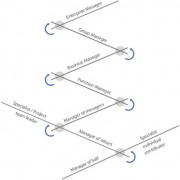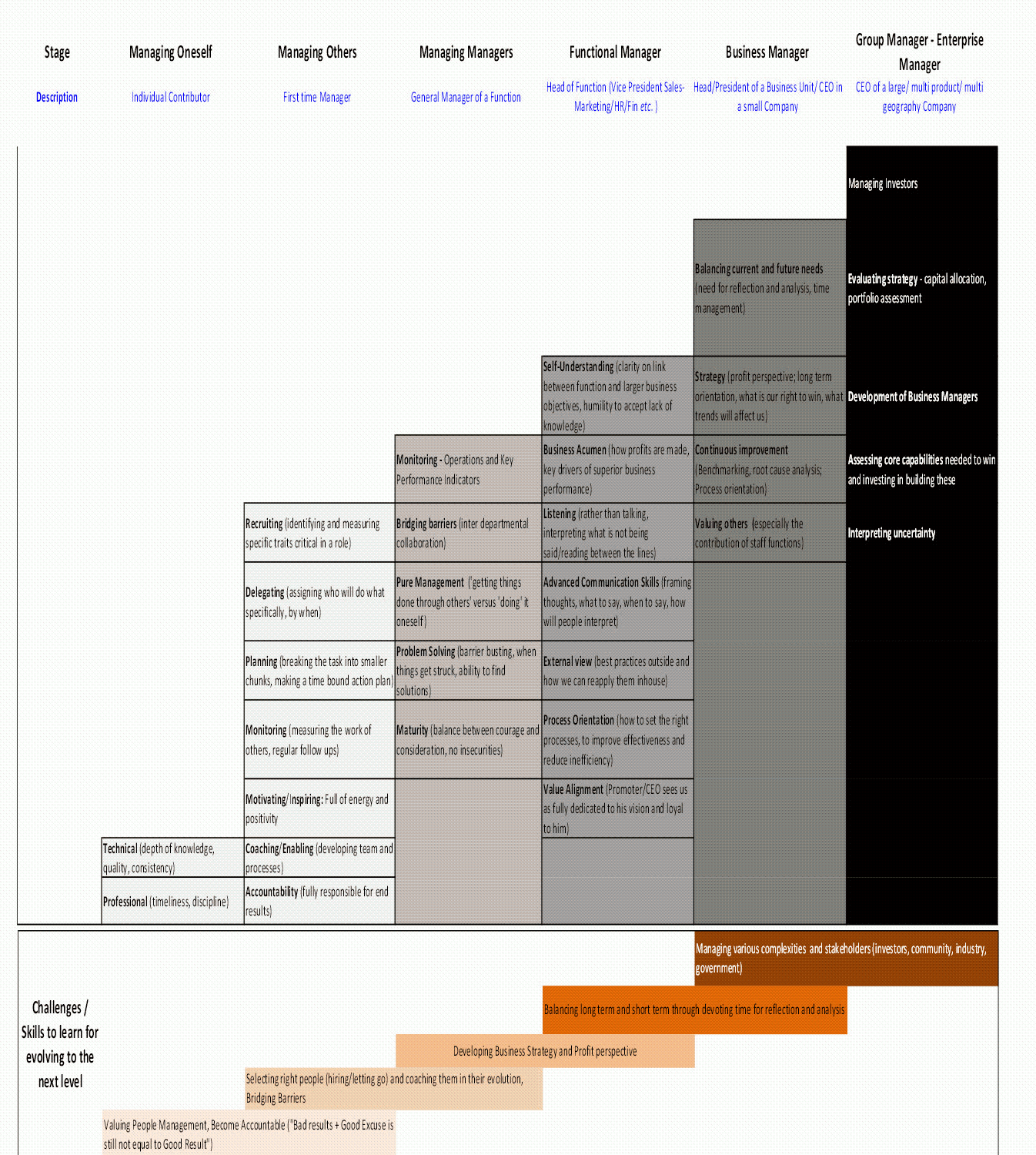5 Golden Rules to ensure Real business impact from Corporate Training (Published in: The Financial Express)
 Organizations – both big and small – spend billions of dollars on Training. Yet, CEOs and HR Heads keep complaining that the effect of training rarely lasts. After the initial high, most employees tend to go back to their old ways, and so over a 3-6 month period, there is hardly any visible difference.
Organizations – both big and small – spend billions of dollars on Training. Yet, CEOs and HR Heads keep complaining that the effect of training rarely lasts. After the initial high, most employees tend to go back to their old ways, and so over a 3-6 month period, there is hardly any visible difference.
Most trainings have two primary reasons – either people are not performing as effectively as they could; or because people need to learn new skills in anticipation of future responsibilities. In both cases, training is a just a tool for the larger expectation that people will do their jobs better. Hence the central validation question is: Did the training make a measurable difference?
Here are 5 tips to ensure this measurable difference, a real long-term impact –

1. A Good Training is taken up as a Consulting Assignment, starting with a rigorous Needs Analysis. First identify the business problem. What is the real issue? Get complete clarity and cross-functional alignment on this issue. Training, per se, has no value in itself… its value is derived from the business problem it solves. Hence, even before starting, ask: Are the right issues being addressed by this training?
For instance, so many clients ask us for a Leadership workshop. But our first question is – what specific trait are you not seeing in your managers? Are they not seeing the big picture well? Are they not collaborating enough? Are they not inspiring their teams? Are they not taking accountability of results? Each of these is a very specific and unique leadership challenge, and needs to be dealt differently. Another example: A Big 4 client asked us to deliver communication workshops, but also warned us that the previous trainers were not effective. When we sat with prospective trainees and their managers, we realized that the trainees needed to be first coached in Structured Thinking, and only then in How to Express Powerfully. If we had just gone ahead with a traditional communication training (grammar, presentation skills, report writing etc.), we would have fallen flat. Now the client is rolling out this adapted training (Thinking Right… and then Expressing Right) across the country.
This Needs Analysis must be transparent and involve top management. Often senior managers complain all problems are with junior managers and ask us to train them. But a closer inspection generally shows critical gaps in the seniors too. Another large MNC asked us to make their middle management ‘problem solvers’, who could solve their own issues, instead of escalating all issues to their managers. However, when we dig deeper, we realized that, in the past, solutions by middle level generally met with lukewarm support, and when things went wrong, they were severely reprimanded. No training can help here, unless the seniors first improve their delegation, empowerment and coaching skills. The # 1 reason we have seen for ‘non-stickability’ of training is that ‘the managers do not role-model what was taught in the workshop’. We need to identify the real problem, across levels and not just the symptoms.
2. The Content must be fully customized for the unique needs of the client. Since we are solving a live business problem, the examples and frameworks we use must be relevant for the participants. For example, I have seen so many Finance For Non Finance or Business Acumen workshops, delivered reasonably well by very knowledgeable trainers. But the non-finance trainees – from Sales, Operations and HR – keep wondering afterwards how they will apply this generic knowledge of cash flows, balance sheet, ratios etc in their own roles.
A large telco approached us to sensitise its Circle Business Heads on the need for Financial Prudence. Profitability was poor partially because of tough competition and partially because Business Heads (generally with a Sales background) were still focussing on volumes and customer base, but not on the cost of acquiring and retaining a customer. We did a thorough research on the sector, interviewed multiple players, used analyst and share price reports to make a powerful case on why cash was to be saved to save the company. We used company specific templates, terms and real scenarios (example: investing in a new tower) to show RoI of investments and arrive at thumb rules (e.g. a new tower makes sense only if subscriber base is more than 1000). The training got 9.7/10 feedback and is now being reapplied across all the Circle Leadership Teams.
 3. The Trainer needs to have practical experience of that particular sector and problem. We need a consultant, with deep contextual familiarity. If we have to train the Sales force of an education company, we need a trainer who has experience doing business development in the education sector. For only he can understand the nuances – in this particular case, the unprofessionalism of various college promoters, the cheque bouncings, the apathy of most teachers and faculty, the attitude issues in the students, the cyclicity of admissions seasons etc. Effective Selling Skills in education will require accounting for these nuances. A pure Sales Trainer – who just focuses on 7Ps and Empathic Listening and Consultative Selling – will only be 60% effective, unable to contextualize his teaching to the unique problems faced by his trainees.
3. The Trainer needs to have practical experience of that particular sector and problem. We need a consultant, with deep contextual familiarity. If we have to train the Sales force of an education company, we need a trainer who has experience doing business development in the education sector. For only he can understand the nuances – in this particular case, the unprofessionalism of various college promoters, the cheque bouncings, the apathy of most teachers and faculty, the attitude issues in the students, the cyclicity of admissions seasons etc. Effective Selling Skills in education will require accounting for these nuances. A pure Sales Trainer – who just focuses on 7Ps and Empathic Listening and Consultative Selling – will only be 60% effective, unable to contextualize his teaching to the unique problems faced by his trainees.
When we were asked by a Food major to improve the Business Partnering of its Finance team, we gave multiple FMCG examples of how finance teams have helped the business make the right strategic choices – in distribution, plants, sales promotions, pricing etc. – areas very relevant to the audience. We got former FMCG CFOs to share their experiences and offer practical tips. The training was so successful it was rolled out across the globe.
4. Use the principles of Androgogy (Adult Learning) to ensure retention and internalization of learning. The challenge for any programme is to ensure long term retention and real life application. We need to understand the science of learning: ADDIE and other models in Instructional Design, Edgar Dale’s Cone of Experience, Bloom’s Taxonomy, 5 Principles of Androgogy, Kolb’s Learning cycle etc. Real-life examples, lectures, videos, interactive activities, quizzes and games need to be used to help in internalization (“show, tell, make them do, make them teach”). For example, while illustrating Johari window (“understanding of self”), we can use a small movie clip from the iconic movie Ek Ruka Hua Faisla. Or while teaching financial analysis, participants can be asked to make the financials of a new product launch (ideally using data of that particular client). Or while teaching Empathic Listening, we may ask the trainees to now train their spouses/friends over phone and get a feedback over sms. We also need to give a lot of respect to the experiences the participants bring, and keep showing them how this knowledge will help them achieve their own goals.

5. Post-training follow-ups and other interventions. Class-room training is just a sensitizing tool. To ensure real impact, we need a structured intervention, with a lot of follow-ups and other enablers. We must rigorously follow all the 4 levels of Kirkpatrick model or equivalent:
- Reaction – what participants thought and felt about the training. This is usuallymeasured immediately after the workshop and generally gets positive scores.
- Learning – the resulting increase in knowledge and/or skills, and change in attitudes. A small quiz may be organized at the end to ensure key learning is internalized.
- Behavior – transfer of knowledge, skills, and/or attitudes from classroom to the job. This evaluation
occurs 3–6 months post training while the trainee is performing the job. Evaluation usually occurs through observation. After 3 months, we must ask the managers of trainees if there is evidence of a change in behavior. For example, after an FNFE workshop, are the trainees now submitting much more financially savvy proposals that made overall sense for the company? If not, what is the point of the workshop even if it got a 9 out of 10 score? - Results – This is always difficult to measure and attribute specific business results to training alone.
But we absolutely must agree on the measures upfront, install a control and do the rigorous due diligence of seeing whether business results improved as a result of the workshop. For example, in the same telco above, the regional head observed that the circle which had most internalized our Business Acumen workshop had also become EBITA positive ahead of target. Or for a pharma retail client, the mystery shopper audit scores went up from 35% to 55% after our sustained customer service intervention. Or in a semi-PSU, the scores on High Performance Organization moved up from ‘Sub- optimal’ to ‘Good’ after 9 months of Leadership Development intervention. This may not be exact science, but we get very clear directional evidence which are very satisfying for the trainer and justify the cost of training to the client.Also realize that pure training will usually not solve the entire business problem. In a Fortune 50 MNC, the Regional Sales Manager asked us to improve the Profit focus of his Area Sales Managers. But when we asked what the ASMs were rewarded on, he said “Obviously volume of sales. Isn’t that standard across all sales teams?” See if we measure people on volumes alone, they will obviously promote volume growth, even when it as at the cost of profitability. The monitoring and reward systems and culture need to be in sync with training.Training is ultimately like Money… There are certain problems it can solve brilliantly well. But many
‘fundamental issues’ require structural changes, and simply throwing training (or money) will not solve them. Training (and money!) is just one of the arrows in our quiver to make us more effective and efficient. Ultimately, its impact will depend on how intelligently we use it!
– Nishant Saxena
[The author is CEO of Elements Akademia, and a Guest Faculty at IIM Lucknow. He can be reached at n.saxena@elementsakademia.com]









 This information will never be shared with third party
This information will never be shared with third party